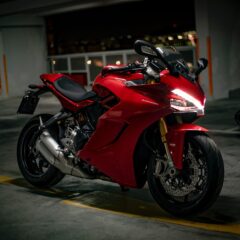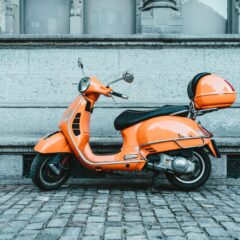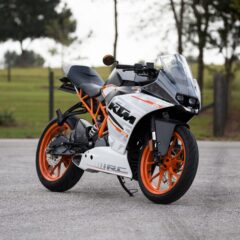
7 Top Motorcycle Accessories
With Christmas just around the corner, you might be wondering what to get your favourite motorcycle enthusiast or even a little something for yoursel...
 Phoenix Motorcycle Training LTD
Phoenix Motorcycle Training LTD
 Phoenix Motorcycle Training LTD
Phoenix Motorcycle Training LTD

Learning to ride a motorcycle, moped or scooter is a great way to find freedom on the road. But the motorcycle and scooter licence system can be a little confusing. Different levels of licences have certain restrictions and liberties. The higher the level of licence, the fewer restrictions there are.
The difference between a scooter and a motorcycle licence is similar to the difference between an automatic and manual driver’s licence. The kind of motorbike you pass your test with will determine the kinds of motorbike you’ll be able to legally ride. Scooters and mopeds have automatic or semi-automatic transmissions. Motorcycles, on the other hand, usually have manual transmissions. Although these days, automatic motorcycles are becoming more common.
The easiest answer is “maybe”. A motorcycle licence, lets you ride both manual and automatic transmission bikes. A scooter licence lets you ride a motorbike, scooter or moped only with an automatic or semi-automatic transmission.
Motorcycles, mopeds and scooters can all have their own specific licences. All are great for commuting. Where you want to ride and what you want to ride influences the level of licence needed for any of these two-wheeled options.
Motorcycles come in a wide range of styles and engine powers. A small motorcycle could have an engine of 50 to 125cc. But more importantly, a motorcycle usually has a manual transmission and you change gears with your feet.
Motorcycles tend to be faster and heavier than scooters or mopeds. The acceleration and high-speed handling characteristics make them suitable for commuting on motorways and through urban areas too. Depending on the engine size, a motorcycle can be ridden with a CBT or full motorcycle licence.
Mopeds get confused with scooters because, to the casual observer, they look very much the same. Riders sit with their feet on a platform in front of them. Mopeds were initially designed with pedals and this is where their name comes from. Today, you’re more likely to find a ‘twist and go’ automatic or semi-automatic transmission without pedals.
Mopeds have smaller wheels than motorcycles and are ideal for urban riding. They’re simple to ride and very manoeuvrable. Typically, their engines are no larger than 50cc if the engine is larger, it technically becomes a scooter. A moped’s top speed is limited to 28mph. This makes mopeds unsuitable for motorway riding.
Scooters look a lot like mopeds, but they often have larger engines and can reach higher speeds. Scooters can have engines as small as 110ccs or as large as 750ccs. If it’s under 50ccs it’s technically a moped. Scooters accelerate faster and have higher top speeds than mopeds.
The quickest answer is, “it depends”. The right kind of scooter licence fits the power of your scooter, the roads you intend to use and whether or not you want to take a passenger along with you.
If you’d like to ride a lower-powered scooter – no more than 125cc – and only need to get about town, you’ll need a minimum of a CBT with your provisional or full driving licence. To avoid the need for biannual renewals, an A1 licence is a good idea.
An AM moped and scooter licence lets you ride a 50cc scooter or moped without L plates. You’ll be able to take a passenger, but you won’t be able to ride on the motorway. Two-wheeled vehicles must have 125cc engines or higher to use the motorway safely.
On the other hand, if you want to ride a high-powered scooter and travel on the motorway with a passenger, you’ll need a higher-level licence. Either an A1, A2, or unrestricted A licence for your higher-powered scooter is what you’ll need.
No. Motorcycle licences show that you can ride manual, automatic and semi-automatic transmission bikes. They’re also linked to the power of the vehicle, where you want to ride, and your age.
A low-level AM scooter licence restricts travel to urban and A roads and low-powered automatic bikes. A higher level unrestricted A licence lets you ride any powered two-wheeled vehicle on all UK roads.
Motorcycle and scooter licencing laws can be tricky to understand when you are starting out. Considering what you want to ride and where you want to ride will help you decide on the best scooter licence for your situation. Once you know what you want, it’s easier to plot your course to that destination!
If you’re unsure of the kind of licence you’ll need, our team are happy to discuss training and licencing options with you. We have motorcycle and scooter training centres all over the UK and can help you achieve the right level of licencing for your needs. Learning to ride a motorcycle or scooter is fun. Our passion is helping more people find the freedom of two-wheels, no matter if that’s a motorcycle, moped or scooter.

With Christmas just around the corner, you might be wondering what to get your favourite motorcycle enthusiast or even a little something for yoursel...

If you love motorcycle riding, you’ve probably daydreamed about riding a motorbike for a living. A professional racer or stunt rider is OK for some...

Getting a UK motorcycle licence can seem a complicated process. Particularly when compared to a driving licence for a car. Whether you choose the pro...
This website uses cookies to personalise content, ads, and analyse traffic, sharing data with partners who may combine it with other information. See our Privacy Policy for more information.